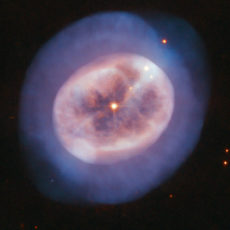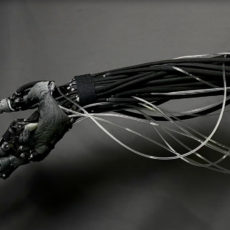
NASA / ESA’s Hubble Space Telescope observed a jellyfish galaxy with trailing tentacles of stars moving through intergalactic space, with its gas slowing being stripped away. As this happens, the gas forms trails that look similar to blue tendrils illuminated by clumps of star formation.

The one you see here, classified as JO201, is located in the constellation Cetus, named after the sea monster from Greek mythology. Upon closer inspection, you’ll see that the tendrils of this jellyfish galaxy extend beyond its brisk disk core. Astronomers hope that these observations will provide a better understanding of the connection between the process that creates the tendrils of jellyfish galaxies and star formation.
- COMPUTERIZED STAR LOCATING TELESCOPE: The Celestron NexStar 130SLT is a computerized telescope that offers a database of more than 4,000 stars,...
- COMPACT AND PORTABLE: This telescope for adults and kids to be used together is ideal for weekend camping trips or excursions to dark sky sites. Its...
- NEWTONIAN REFLECTOR OPTICAL DESIGN: The NexStar 130SLT is the largest in the SLT family. The 130mm aperture gathers enough light to see our Solar...
Hubble’s Wide Field Camera 3 (WFC3) captured this galactic seascape. A versatile instrument that captures images at ultraviolet, infrared, and visible wavelengths, WFC3 is the source of some of Hubble’s most spectacular images,” said NASA.







